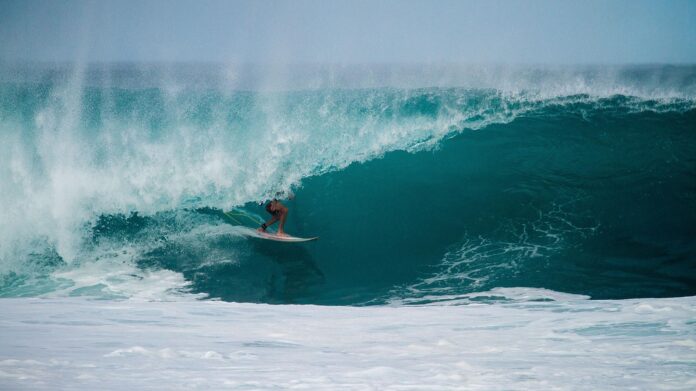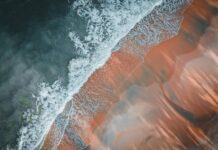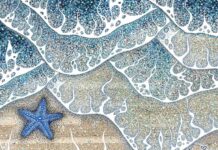It’s easy to get overwhelmed when looking to pin down and line up your next surf trip. With so many options the world over deciding when to pull the trigger as far as a destination is concerned can be tricky. After all, you’re going to be investing your hard-earned cash into whatever strike you plan on taking. What if you get skunked? What if the town is dog? For the most part, those are questions you’ll only be able to truly answer on arrival. So, here to make your life a degree or two easier we offer 5 destinations that might not jump to the front of your mind when you think ‘surf trip’ but promise to make for a helluva time.
Durban, South Africa
South Africa is an immensely diverse country both culturally and ecologically with no city being more representative of that than Durban or as it is affectionately known – “Surf City”. Due to its high population density of surfers, temperate climate, warm water and laid back energy, the city is awash with people of the brine.
Situated on the East Coast, Durban provides year-round waves geared toward beginners right up to barrel-hungry chargers. Summer in Durban sees the swell building up from cyclone activity off Madagascar and Mozambique, while winter waves come as the result of cold fronts welling up from the Cape bringing along 6-8ft kegs as well as one of nature’s biggest events, the Sardine Run.

If you’re looking to slay giants and put your chops on the block then look no further than the Bluff. A short drive from Durban CBD you’ll find the high-performance wave known as Cave Rock. Cave on its day demands respect playing host to experienced surfers only, don’t come here if you can’t handle aggressive surf and a tough paddle.
Not yet at that level with your surfing then the Golden Mile skirting Durban’s beachfront will serve as your surfing Mecca. From Snake Park to South Beach waves are aplenty with the most famed and hallowed of all peaks going the way of New Pier. When the swell is East and the South West is up your best served finding your place between the piers although the crowd might lower your wave count.
If you’re looking to escape the crowds and don’t mind a short drive, then the Kwa-Zulu Natal South Coast awaits. With point break after point break lining the shore, your options are endless. If that’s more your vibe we suggest making friends with a local as insider knowledge on this stretch of coast is vital as you’re going to want to know where you definitely shouldn’t go.
Best time to visit: April to July
Thumbs Up (emoji) – Cheap, plenty of peaks, offshore all winter, warm water
Thumbs Down (emoji) – Can get crowded, crime (certain areas), pollution after heavy rains
Ericeira, Portugal
Whether you’re looking to get your foot into the Big Wave door, score cranking beach breaks, or get the soft top out Portugal has you covered. Steeped in ancient history and lined with cobblestoned streets adventure awaits any frothing surfer. Not far from the countries Capital, Lisbon, a handful of Europes best waves are within reach most notably, Nazare, Coxos (Ericeira), and Supertubos (Peniche) to name a few.
Situated in one of the countries most beautiful towns, Ericeira, and considered by many to be one of Portugals most elite waves is the fast right-hander, Coxos. Breaking over flat rock and coming alive on a lower tide this wave is any naturals dream! Ericeira has a huge variety of waves ranging from beginner to expert be it heavy beach breaks, chunky slabs or silky smooth points. Interesting to note is the fact that Ericeira is Europes first World Surfing Reserve no doubt a bucket list destination for any surfer.

Looking to put hair on your chest and getting the measuring tape out? Then Nazare is for you. A 90-minute drive outside of the capital you’ll find one of surfing’s natural world wonders on the outskirts of an old school fishing village. This wave is not for the faint-hearted and requires one to be physically and mentally sharp! The area around Nazare has some of Portugal’s most consistent surf so if you’re not into facing +60ft demons maybe check what’s happening around the headland or just set up shop on the hillside and watch mother nature do her spectacular thing.
A 40-minute trip south of Nazare toward Lisbon you’ll find Supertubos the home of the Rip Curl Pro. The wave here is formed by an open/unprotected beach break that can hold massive surf thanks to its position on the peninsula. Sticking out from the mainland in every direction Peniche offers up surf year-round. Although the town may not be as aesthetically pleasing as Ericeira’s traditional town vibe it makes up for it with epic surf for every level of surfer consistently. Peniche in recent years thanks to its exploding surf culture has become one of the biggest surf scenes in Europe.
Best time to visit: September to March
Thumbs Up – Plenty of beach and reef breaks, consistent offshore winds, amazing nightlife
Thumbs Down – Crowds, swell can drop for days on end during summer, can get expensive
Taghazout, Morocco
Long before it became the surf capital of Morocco, Taghazout owed its origins to fishing. Then around the mid-50s and stretching through to the 60s a righteous movement took place seeing an influx of artists, writers, musicians, and adventurers toward the coast. In the years that followed surfing took hold to the extent that nowadays the sight of surfers meandering the ancient corridors of the city with a surfboard in one hand and a flat white in the other is commonplace.
Taghazout is as close to a literal surfing oasis as you’re going to get. With a mouth-watering combo of quality pointbreaks, reefs, and beach breaks found in every direction. Wrapping the cliff face, in most parts, you’ll find a stretch of road allowing easy access to a plethora of peaks. With a warm climate and swell from the North Atlantic knocking at the door, this surf destination has something for everyone.

From Banana Beach (perfect for beginners) in the South to Boilers in the North Taghazout has at least 7 world-class waves with Anchor point being the Grand Daddy of them all. Lighting up in medium to large northwest swell and working well on most tides the peeling right-handers on display become almost hypnotic. With plenty of time for you to burry your rail through a flurry of cutbacks and the occasional tube near the end section, you’re able to let your surfing do the talking.
With big, fast walls running over a rocky reef Boilers is another must. More hollow than Anchor Bay, Boiler’s steep takeoff will test you in the pocket. Pass the test and you’ll be rewarded with a delicious barrel. Be careful when entering the water, misjudge the entry, and you’ll be swept onto an old ship’s boiler – the waves namesake. When the winds up, Boilers will be your best bet.
Due to its location, the waves in Taghazout are almost always produced by long-period ground swells translating to crisp, well-shaped waves with plenty of juice.
Best time to visit: November to March
Thumbs Up – Amazing point breaks, variety of waves, cheap, plenty of hidden gems
Thumbs Down – poor infrastructure, crowds, unreliable waves in the summer, pollution
Puerto Escondido, Mexico
If you’re searching for heavy waves, adventure, and like to mainline adrenalin then this surfing paradise is just what the doctor ordered. Home to one of the planet’s gnarliest and most infamous beach breaks, Playa Zicatela, Puerto Escondido has everything you need to make a surf trip unforgettable. From chilled, authentic Mexican character to absolutely firing surf you’re going to want to pencil in this destination sooner than later.
Puerto Escondido has been on the Mexican surf scene since the 1950s but it wasn’t until the 80s and 90s when surfers and shapers started to push the boundaries of what was possible that the ‘Mexican Pipeline’ really came to light. Yes, there is a wave out there that could probably decapitate you… but there are also plenty of other more forgiving peaks that will make surfing in the region well within your limits.

One such wave is La Punta, the perfect place for the intermediate surfer. The wave can be found adjacent to its evil compadre (Playa Zicatela) at the southern end on the point break. La Punta is not as powerful making it far less intimidating and ultimately manageable for those not yet at that ‘advanced’ phase in their surfing. But don’t let that fool you. The wave along with its heavy rips and punchy lefts make for some dicey sections.
When compared to the northern parts of Mexico (Nayarit, Cabos) Puerto Escondido is a little different where surfing is concerned. Located along the Oaxacan coast, almost on an ‘elbow’ the overall benefits that come from the more common N-NW winter swells are less frequent.
If you aim to catch the world’s heaviest sand-bottomed mutant in full swing then May to August holds the most promise as swell from the Southern Ocean rolls in, firing up the region’s shore breaks, bringing heaps of pro surfers and chargers into town. As it is with many breaks the world over, the mornings are punctuated with heavy sets and stella conditions. This close to the equator it’s advised you have a siesta as the midday sun will make short work of your ice cream. Overall the town is a great base for exploring the whole Oaxaca region.
Best time to visit: May to September
Thumbs Up – Thriving surf town, world-renowned beach break, cheap
Thumbs Down – Can get crowded, short season
Bundoran, Ireland
As far as Surfings timeline in Ireland is concerned, Bundoran, has served as its capital. The exponential growth in surfing in the region as well as its allure has helped to stretch the surf season to practically a year-round affair. Surfers have been dropping in from all over the globe in the hope of experiencing the diverse natural beauty (and waves) that one of Ireland’s best seaside towns has to offer.
No matter what time of the year you aim to plan a surfari to this cold water Indo you’ll score. Be it in the dead of winter or the heart of summer you’ll be able to find a wave in Bundoran. With 26 known breaks in Donegal Bay, you’ll be able to source whatever wave tickles your surfing fancy. Looking for a beachie, slab, reef, point… you’ll find one!
To the north of Bundoran, you’ll find one of the countries choicest beaches, Tullan Strand. Here you’ll be treated to sumptuous sand-bottomed wedgy waves that later shape into a cruisey left near the end section. Tullan Strand doubles as the region’s most consistent beach wave, working best on a medium-sized swell perfect for surfers of all skill sets.
Staking its claim to being arguably the best wave the Emerald Isle has to offer and conveniently placed in the centre of Bundoran you’ll find ‘The Peak’. This world-class reef break produces short rights and longer lefts working best on a lower tide mostly taken on by experienced surfers. The only drawback – crowds.
Located a few kilometres outside of Bundoran you’ll stumble across one of the world’s most up and coming destinations for big wave surfing – Mullaghmore. The headland can hold mammoth Atlantic swells with the left-hander stirring around the 10 ft mark continuing to hold swell beyond 50 ft. Just last year Conor Maguire surfed what many are calling the biggest wave ever caught in Irish waters.
Looking past the numerous cold water slabs, reefs, and stunning scenery Bundoran has a bustling nightlife with clubs and pubs galore. The locals, provided you step on their toes, are welcoming and willing to share… just maybe not their secret spots. If you don’t mind slipping into a cold wetsuit then Irelands a definite must-do!
Best time to visit: September to May
Thumbs Up – Welcoming locals, plenty of waves, beautiful countryside
Thumbs Down – Cold, crowds




